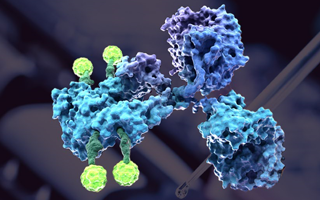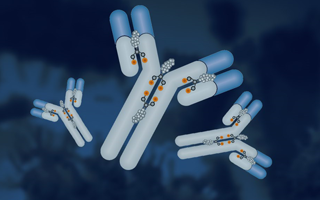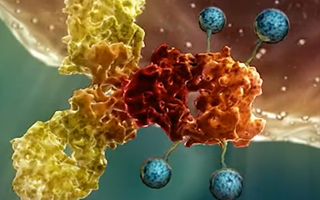Nucleus Positioning Intrabody Development Service
Creative Biolabs offers our clients the first-rate nucleus positioning Intrabody development platform harboring the superior performance and other additional functions. Through the screening of NLS libraries of multiple model species, our bioinformatic machine will optimize the sequences with strict validation tests and multiple scientific parameters, which can position proteins or intrabodies specifically in the nucleus with minimal efforts and risks.
Nucleus Positioning
Nuclear is the most critical compartment of eukaryotic cells to sequester cellular DNA and separate the nuclear DNA replication and RNA transcription from the protein synthesis in the cytoplasm. Just as other organelles, the nuclear-required proteins are translated and synthesized in the cytoplasm and subsequently sorted back to the nucleus. Typically, mature nuclear protein tailed with nuclear localization signal binds to the nuclear pore complex without a requirement of energy first. Then an energy-dependent translocation occurs to pass protein through the channel of the nuclear pore complex (NPC) with the help of importin complex.
Nuclear localization sequences (NLSs) are one or more short sequences of positively charged lysines or arginines exposed on the protein surface, which could be recognized by importin α and interact with importin β specifically. The particular categories are depicted as follows:
Classical NLSs is the most common NLSs found in the majority of nuclear proteins as either monopartite or bipartite. The very first NLS belongs to monopartite discovered in the SV40 Large T-antigen. Further studies identified more NLSs in different nuclear proteins such as C-myc, TUS, EGL-13, and nucleoplasmin, among which the NLS of C-myc is more efficient than NLS of SV40. Particularly, the NLS of nucleoplasmin is manifested as a prototype of the ubiquitous bipartite signal, which possesses two clusters of basic amino acids separated by a spacer of about 10 amino acids.
Non-classical NLSs are some novel NLSs found in the acidic M9 domain of hnRNP A1, yeast transcription repressor Mat α2 (KIPIK) and other nuclear proteins, which are recognized directly by specific receptors of the importin β family without the involvement of an importin α-like protein.
PY-NLSs are one category of NLSs, which possess proline-tyrosine amino acid pairing in its NLSs to allows the interaction with importin β2 (transportin or karyopherin β2).
Other Anchoring Modification Options provided by Creative Biolabs
Including the nucleus, Creative Biolabs can also develop specific positioning antibody for a variety of destination, which including but not limited to:
| Extracellular Space | Extracellular Plasma Membrane | Intracellular Plasma Membrane | Cytoplasm |
| Nucleus | Endoplasmic Reticulum | Golgi Apparatus | Mitochondria |
| Chloroplast | Lysosome | Peroxisome | Vacuoles |
Creative Biolabs is unceasingly accumulating and creating evolutional strategy to develop the first-rate novel and advanced technology in biological areas. Our scientists are dedicate to offering the best antibody discovery and development service to facilitate our clients’ research. If you are interested in developing novel intrabodies, please do not hesitate to inquire us for detailed information.
All of our antibody products and services can only be used for preclinical research studies. Do not use them on humans.
Related Services:
- Extracellular Space Positioning Antibody Development
- Extracellular Plasma Membrane Positioning Antibody Development
- Intracellular Plasma Membrane-Anchored Intrabody Development
- Cytoplasm Positioning Intrabody Development
- Endoplasmic Reticulum Positioning Intrabody Development
- Golgi Apparatus Positioning Intrabody Development
- Mitochondria Positioning Intrabody Development
- Chloroplast Positioning Intrabody Development
- Lysosome Positioning Intrabody Development
- Peroxisome Positioning Intrabody Development
- Vacuole Positioning Intrabody Development

Welcome! For price inquiries, please feel free to contact us through the form on the left side. We will get back to you as soon as possible.
Contact us
USA
Tel:
Fax:
Email:
UK
Tel:
Email:
Germany
Tel:
Email:







